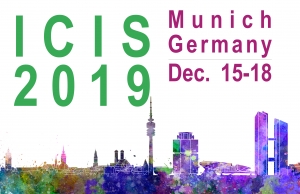Paper ID
2312
Paper Type
short
Description
The increasing importance of digital platforms is undisputed. Digital platforms integrate and orchestrate an ecosystem of autonomous actors to co-create value instead of relying solely on internal innovation capabilities. To achieve this, the platform owner provides digital affordances through boundary resources that an ecosystem of complementors can use to create value-adding services. The platform combines internal innovation capabilities by providing digital affordances and utilizes external innovation capabilities between complementors that refer to the generativity of the ecosystem. However, it remains unclear how the provision of affordances and the interaction of complementors led to the tremendous success of digital platforms. To disentangle both internal and external innovation capabilities, we adhere to a fuzzy-set qualitative comparative analysis based on a set of 47 platforms. Preliminary results reveal four configurations of leading platforms that combine affordances of the platform and generativity in an ecosystem to point toward a fruitful area for future research.
Recommended Citation
Hein, Andreas; Soto Setzke, David; Hermes, Sebastian; and Weking, Jörg, "The Influence of Digital Affordances and Generativity on Digital Platform Leadership" (2019). ICIS 2019 Proceedings. 10.
https://aisel.aisnet.org/icis2019/is_heart_of_innovation_ecosystems/innovation_ecosystems/10
The Influence of Digital Affordances and Generativity on Digital Platform Leadership
The increasing importance of digital platforms is undisputed. Digital platforms integrate and orchestrate an ecosystem of autonomous actors to co-create value instead of relying solely on internal innovation capabilities. To achieve this, the platform owner provides digital affordances through boundary resources that an ecosystem of complementors can use to create value-adding services. The platform combines internal innovation capabilities by providing digital affordances and utilizes external innovation capabilities between complementors that refer to the generativity of the ecosystem. However, it remains unclear how the provision of affordances and the interaction of complementors led to the tremendous success of digital platforms. To disentangle both internal and external innovation capabilities, we adhere to a fuzzy-set qualitative comparative analysis based on a set of 47 platforms. Preliminary results reveal four configurations of leading platforms that combine affordances of the platform and generativity in an ecosystem to point toward a fruitful area for future research.


